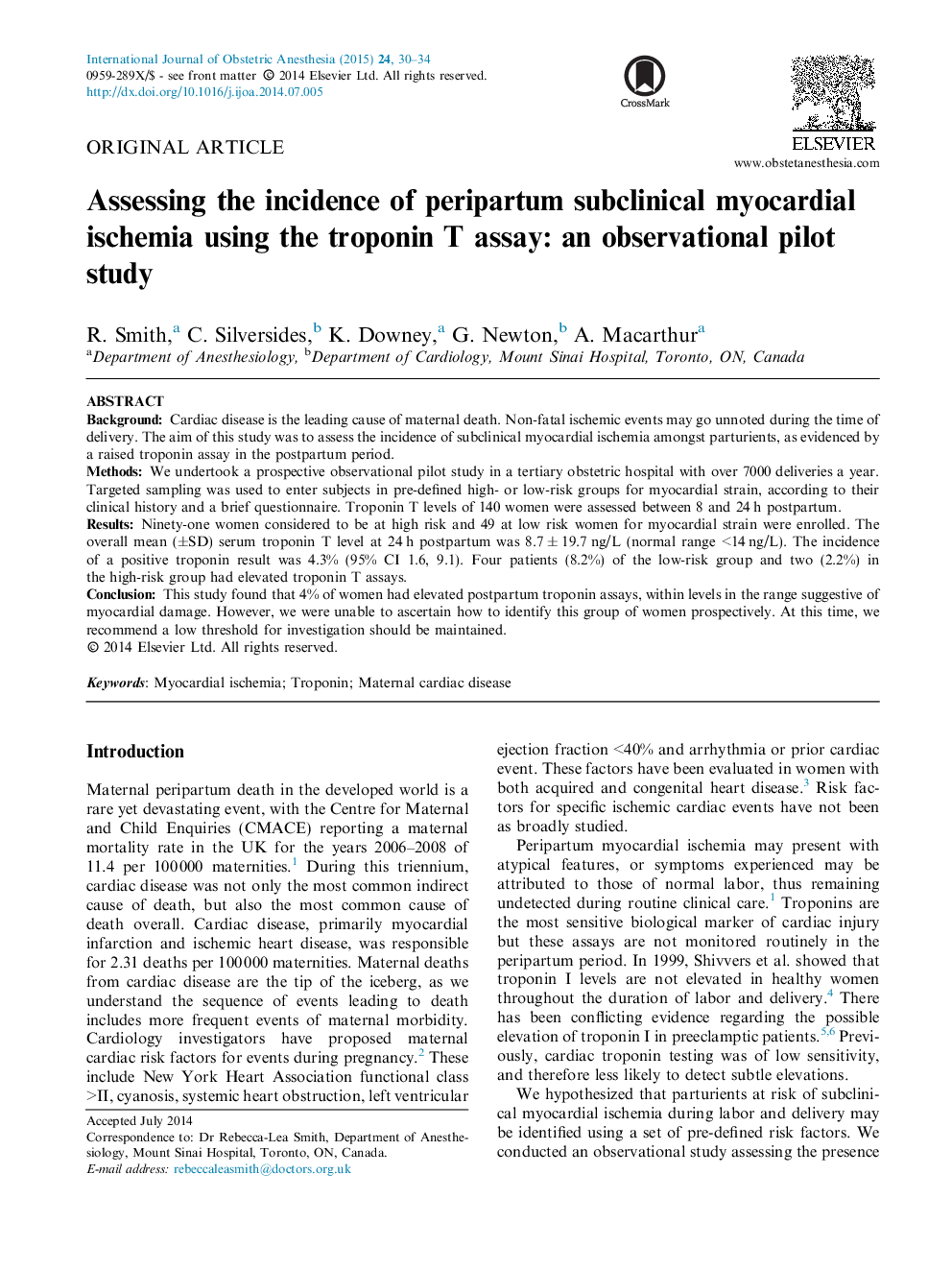| Article ID | Journal | Published Year | Pages | File Type |
|---|---|---|---|---|
| 2757554 | International Journal of Obstetric Anesthesia | 2015 | 5 Pages |
•We assessed the incidence of peripartum subclinical myocardial ischemia using troponin T.•We found a 4.3% incidence of raised assays amongst 140 women.•Pre-defined risk factors did not enable prospective identification of these women.
BackgroundCardiac disease is the leading cause of maternal death. Non-fatal ischemic events may go unnoted during the time of delivery. The aim of this study was to assess the incidence of subclinical myocardial ischemia amongst parturients, as evidenced by a raised troponin assay in the postpartum period.MethodsWe undertook a prospective observational pilot study in a tertiary obstetric hospital with over 7000 deliveries a year. Targeted sampling was used to enter subjects in pre-defined high- or low-risk groups for myocardial strain, according to their clinical history and a brief questionnaire. Troponin T levels of 140 women were assessed between 8 and 24 h postpartum.ResultsNinety-one women considered to be at high risk and 49 at low risk women for myocardial strain were enrolled. The overall mean (±SD) serum troponin T level at 24 h postpartum was 8.7 ± 19.7 ng/L (normal range <14 ng/L). The incidence of a positive troponin result was 4.3% (95% CI 1.6, 9.1). Four patients (8.2%) of the low-risk group and two (2.2%) in the high-risk group had elevated troponin T assays.ConclusionThis study found that 4% of women had elevated postpartum troponin assays, within levels in the range suggestive of myocardial damage. However, we were unable to ascertain how to identify this group of women prospectively. At this time, we recommend a low threshold for investigation should be maintained.
